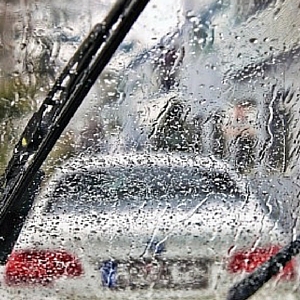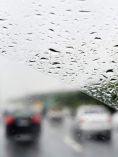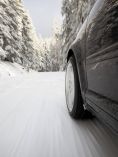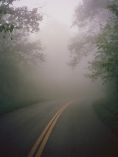Braving the Storm in Your Car

Storms can catch you off guard, and if you're in your car when one strikes, you have to think fast! Would you know what to do if you are caught in a hailstorm, driving when a tornado is in the vicinity or run into a road that's flooded over?
Hail
Hail can be as small as a pea or as large as a baseball. If you are in your car during a hailstorm, you're probably concerned about damage to your car. To minimize the damage, keep these tips in mind:
- Try to find covered parking.
- If you cannot find covered parking, pull over. Driving in hail will only make the damage worse.
- Because large hail is less likely to break a windshield than side or back windows, try to park your car with your windshield facing the hail.
Tornadoes
You've been working all day, not listening to the radio. When you leave to go home, you notice the skies look ominous, so you decide to hurry home to take cover from the impending storm. Just as you pull on to the highway, tornado sirens go off. What should you do? It depends…
- According to the NOAA, if you are driving and you see a tornado that is far away, the safest thing to do is rive at a right angle to that movement, so if it's heading east, drive to the south.
- If the tornado is too close to drive away from, pull over and try to find sturdy shelter. If there's no time, lie flat in a ditch and try to protect yourself from flying debris.
Flooded Roads
Have you ever been driving and suddenly approach a road that's flooded over? If it's only a small section of the road, you may be tempted to drive through it—particularly if you drive an SUV or a truck. However, this can be risky business. If you approach what appears to be a deep puddle or flood and you can't turn around, remember:
- Your car's engine can be damaged in as little as six inches of water, and 12 inches of water can cause a car to float.
- The pavement under the flood waters may be completely gone.
If you find yourself out on the open road in any of these conditions, the best thing you can do to stay safe and minimize damage to your car is to try to find a sturdy shelter, even if it means you will not reach your destination on time.
-
Driving in Rain
 Wet Driving Tips
Wet Driving TipsDriving in the rain is similar to driving in a storm, but you don’t need to try to take cover. Find out how to navigate rainy roads.
-
Driving in Snow and Ice
 Get Slick Tips
Get Slick TipsDriving on slick roads covered with snow and/or ice can be tricky. Knowing what to do is key to doing it safely.
-
Driving in Fog or Smoke
 Foggy Driving
Foggy DrivingNot being able to see when you drive is scary. You never know what—or WHO—you might hit! Here’s how to stay in focus.
